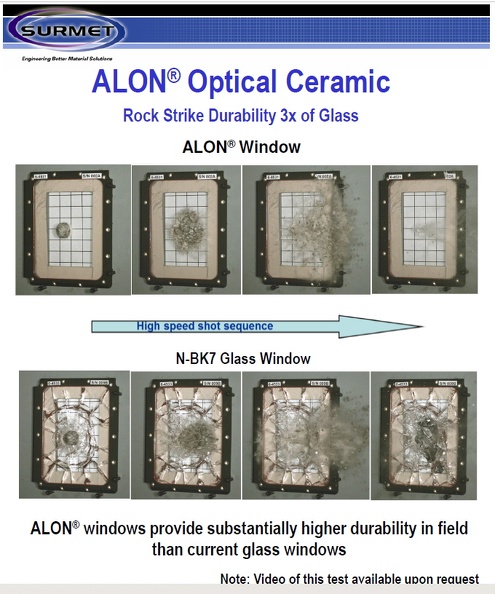A NEW TOY for @jamesp to play with
Mar 16, 2020 7:27:55 GMT -5
RickB, fernwood, and 3 more like this
Post by 1dave on Mar 16, 2020 7:27:55 GMT -5
jamesp I have what you are looking for - TRANSPARENT ALUMINUM!
List of Star Trek materials - From Wikipedia, the free encyclopedia
This is a list of notable fictional materials from the science fiction universe of Star Trek. Like other aspects of stories in the franchise, some were recurring plot elements from one episode or series to another.
Contents
1 Metals for starship construction
1.1 Transparent aluminium
1.2 Trellium-D
2 Energy sources
3 Precious materials
4 Propulsion
5 Minerals
6 Drugs
7 Unstable substances
8 Other
9 Fictional substances within Star Trek
10 See also
11 References
12 External links
Transparent aluminium
Star Trek technical manuals indicate that transparent aluminium is used in various fittings in starships, including exterior ship portals and windows. It was notably mentioned in the 1986 film Star Trek IV: The Voyage Home. Ultra-strong transparent panels were needed to construct water tanks within their ship's cargo bay for containing two humpback whales and hundreds of tons of water. However, the Enterprise crew, without money appropriate to the period, found it necessary to barter for the required materials. Chief Engineer Montgomery Scott exchanges the chemical formula for transparent aluminium for the needed material. When Dr. Leonard McCoy informs Scott that giving Dr. Nichols (Alex Henteloff) the formula is altering the future, the engineer responds, "Why? How do we know he didn't invent the thing?" (In the novelization of the film, Scott is aware that Dr. Marcus "Mark" Nichols, the Plexicorp scientist with whom he and McCoy deal, was its "inventor," and concludes that his giving of the formula is a predestination paradox/bootstrap paradox.) The substance is described as being as transparent as glass while possessing the strength and density of high-grade aluminium. It was also mentioned in Star Trek: The Next Generation episode "In Theory".
The series' science consultant André Bormanis has concluded that the material would not be a good conductor of electricity.
Real-life transparent substances composed of some aluminium
An aluminium window pane, "of glass-like transparency" was reported from Germany in 1933.[1]
Sapphire (Al2O3) is transparent and is widely used in commercial and industrial settings. It has a hardness of 9 Mohs, making it the third hardest mineral after diamond and moissanite.
Aluminium oxynitride ((AlN)x·(Al2O3)1−x) is a transparent ceramic which has a hardness of 7.7 Mohs, and has military applications as bullet-resistant armour, but is too expensive for widespread use.[2][3] It was patented in 1986.[4]
Pure transparent aluminium was created as a new state of matter by a team of scientists in 2009. A laser pulse removed an electron from every atom without disrupting the crystalline structure.[5] However, the transparent state lasted for only 40 femtoseconds, until electrons returned to the material.
A group of scientists led by Ralf Röhlsberger at Deutsches Elektronen-Synchrotron (DESY), Hamburg, Germany, succeeded in turning iron transparent during research in 2012 to create quantum computers.[6][7]
This is a list of notable fictional materials from the science fiction universe of Star Trek. Like other aspects of stories in the franchise, some were recurring plot elements from one episode or series to another.
Contents
1 Metals for starship construction
1.1 Transparent aluminium
1.2 Trellium-D
2 Energy sources
3 Precious materials
4 Propulsion
5 Minerals
6 Drugs
7 Unstable substances
8 Other
9 Fictional substances within Star Trek
10 See also
11 References
12 External links
Transparent aluminium
Star Trek technical manuals indicate that transparent aluminium is used in various fittings in starships, including exterior ship portals and windows. It was notably mentioned in the 1986 film Star Trek IV: The Voyage Home. Ultra-strong transparent panels were needed to construct water tanks within their ship's cargo bay for containing two humpback whales and hundreds of tons of water. However, the Enterprise crew, without money appropriate to the period, found it necessary to barter for the required materials. Chief Engineer Montgomery Scott exchanges the chemical formula for transparent aluminium for the needed material. When Dr. Leonard McCoy informs Scott that giving Dr. Nichols (Alex Henteloff) the formula is altering the future, the engineer responds, "Why? How do we know he didn't invent the thing?" (In the novelization of the film, Scott is aware that Dr. Marcus "Mark" Nichols, the Plexicorp scientist with whom he and McCoy deal, was its "inventor," and concludes that his giving of the formula is a predestination paradox/bootstrap paradox.) The substance is described as being as transparent as glass while possessing the strength and density of high-grade aluminium. It was also mentioned in Star Trek: The Next Generation episode "In Theory".
The series' science consultant André Bormanis has concluded that the material would not be a good conductor of electricity.
Real-life transparent substances composed of some aluminium
An aluminium window pane, "of glass-like transparency" was reported from Germany in 1933.[1]
Sapphire (Al2O3) is transparent and is widely used in commercial and industrial settings. It has a hardness of 9 Mohs, making it the third hardest mineral after diamond and moissanite.
Aluminium oxynitride ((AlN)x·(Al2O3)1−x) is a transparent ceramic which has a hardness of 7.7 Mohs, and has military applications as bullet-resistant armour, but is too expensive for widespread use.[2][3] It was patented in 1986.[4]
Pure transparent aluminium was created as a new state of matter by a team of scientists in 2009. A laser pulse removed an electron from every atom without disrupting the crystalline structure.[5] However, the transparent state lasted for only 40 femtoseconds, until electrons returned to the material.
A group of scientists led by Ralf Röhlsberger at Deutsches Elektronen-Synchrotron (DESY), Hamburg, Germany, succeeded in turning iron transparent during research in 2012 to create quantum computers.[6][7]
























 ... to the New Guys from The ChatBox V.2 Crew
... to the New Guys from The ChatBox V.2 Crew